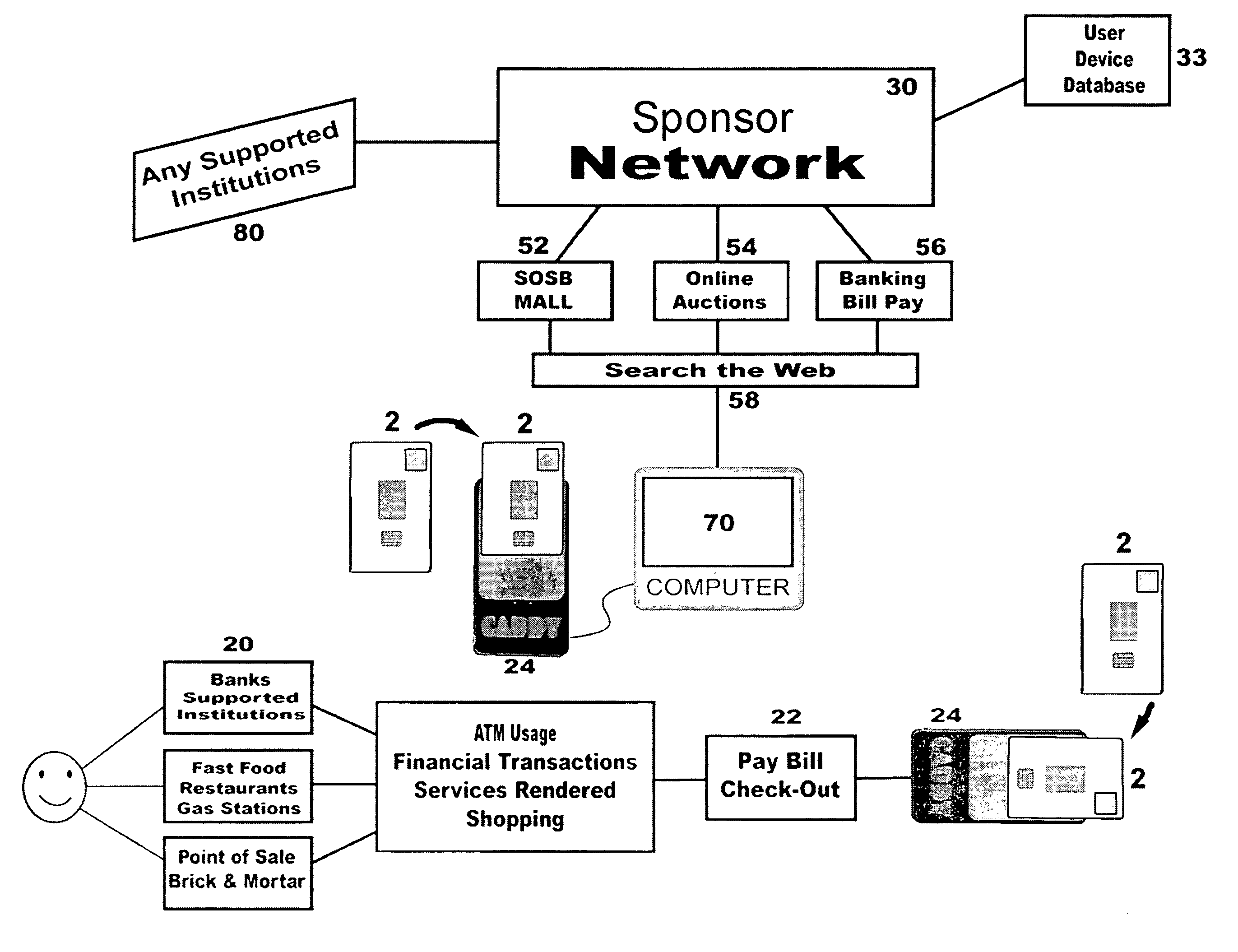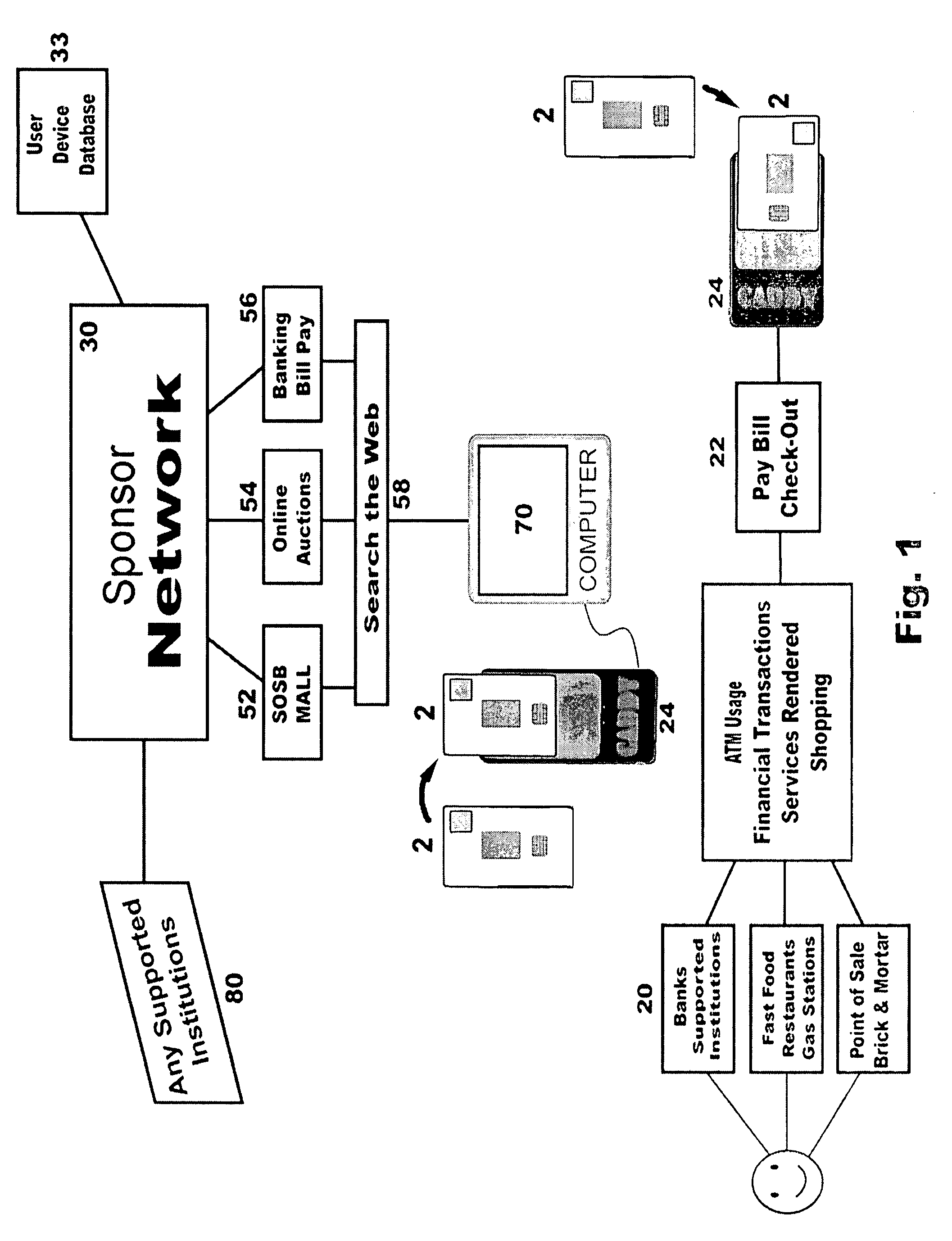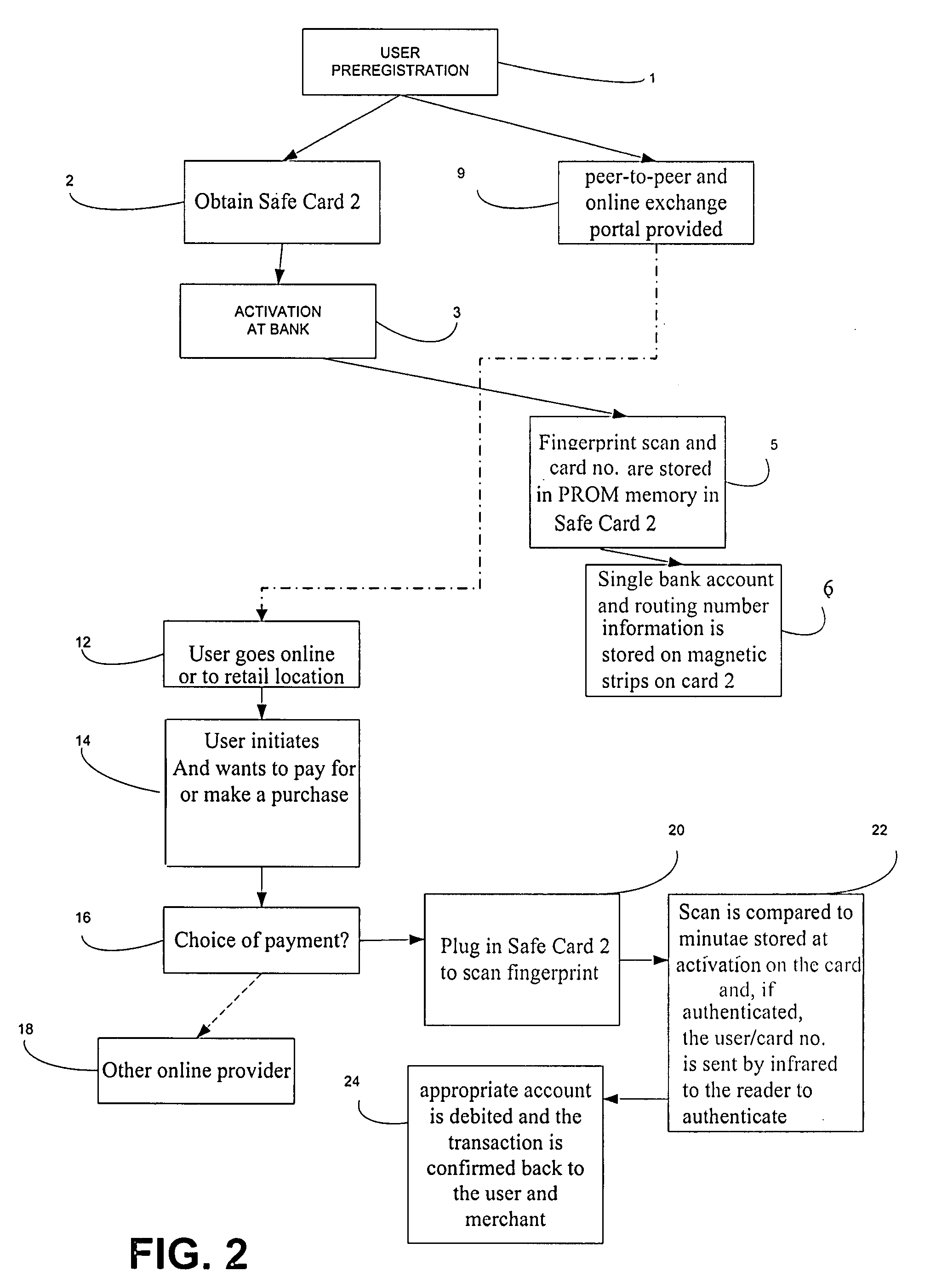[0023]Accordingly, it is an object of the present invention to provide a secure form of identification for individuals that can only be used and accessed by the individual owner of the card, while also assisting merchants and consumers in protecting themselves against the dramatic increase of transaction fraud via biometric security, while also ensuring complete privacy of
consumer's biometric and financial data.
[0024]It is another object to provide a convenient method for biometric-secure overall point-of-sale setting, as well as
restricted access authentication, to provide a individual high-confidence authentication and yet simplify the checkout and / or authentication process.
[0025]According to the present invention, the above-described and other objects are accomplished by providing a transaction system to facilitate the point-of-sale purchase process (and restricted access authentication process) with integrated encrypted biometric (fingerprint) security. More particularly, the system permits biometric-secure buying, selling, bill paying and authentication in retail point-of-sale settings and other secure-access settings to simplify checkout and to eliminate fraudulent transactions.
[0029]To consummate a transaction (after registration and activation), the user simply plugs their card
scanner into a multi-function reader, and scans their own fingerprint. The fingerprint card scanner obtains scan data corresponding to the same section of the fingerprint taken at activation, compares it to the stored fingerprint portion and, upon authentication transmits the card / user ID to the reader as authentication of the transaction or access. Upon authentication, the reader reads the encrypted encoded account numbers and routing information from the cards on-
board processor / scanner, offers a choice of account to charge to, verifies the total charge and completes the transaction. Given authentication, the
user information and routing number for the transaction are transmitted to the designated
bank or financial institution to clear the transaction. All such
data transmission is fully encrypted. Thus, the user's own card scanner gives instant authentication, and since only the encrypted user / card number, transaction details and routing information is ever transmitted (not fingerprint data) this system more fully protects the user's privacy.
[0031]The self-authenticating SAFE Card combines memory & magnetic strips on a smartcard platform with built-in biometric
fingerprint recognition, to provide exceptionally robust
user authentication while performing a variety of smartcard functions. These functions can include but are not limited to; account management, airline or any form of secure associated travel, accessing facilities or networks, secured borders, hospitals,
drug related services, personal
medical information, authorizing electronic transactions or transmitting a certified
digital signature while assuring privacy of all data associated with the card. The user's unique fingerprint offers a reliable and economical means of biometrically authenticating the user's identity far more securely than using a
personal identification number (PIN) or a
password. By linking the user directly to the transaction process through their fingerprint, the cardholder's identity is confirmed beyond repudiation; they are not just someone who picked-up a stray card or happens to know the card's assigned PIN or
password. The all-in-one, credit card-sized device contains its own integral fingerprint reader, on-board memory, a serial number and bar-code, multiple magnetic strips, and a photo for ID security. The card's biometric sensor is completely contained in a self-authenticating subsystem. It does not require the use of any external sensors, algorithms, template matches or
database access. This card employs a
third generation capacitive array sensor
chip that detects and captures small variations in the
finger surface capacitance and creates a three-dimensional electrical image of the fingerprint's unique pattern. The card is activated by a subset of “minutia” that is stored locally on the device itself. The unique features of the image are extracted to form its own encrypted template which is then stored into protected memory in the module. This entire operation is completed on the card. Upon completion of the enrollment process, the module is “locked” and subsequent placement of any finger on the sensor triggers the
verification process. This involves comparing the previously stored “registered” data with the current finger. With the card's authentication and a resulting match, the person holding the card is verified as its original enrolled authorized user. To consummate a transaction (after registration), the user simply plugs their card into a multi-function reader and scans their own fingerprint. Upon authentication, the card transmits the card / user ID to the reader for authentication for access or a secure transaction. The foregoing processes are fully secure and these cards can only be accessed by the original enrolled user on the device (the SAFE Card does not rely on a bio-metric registrar or
database for their use).
 Login to View More
Login to View More  Login to View More
Login to View More 


